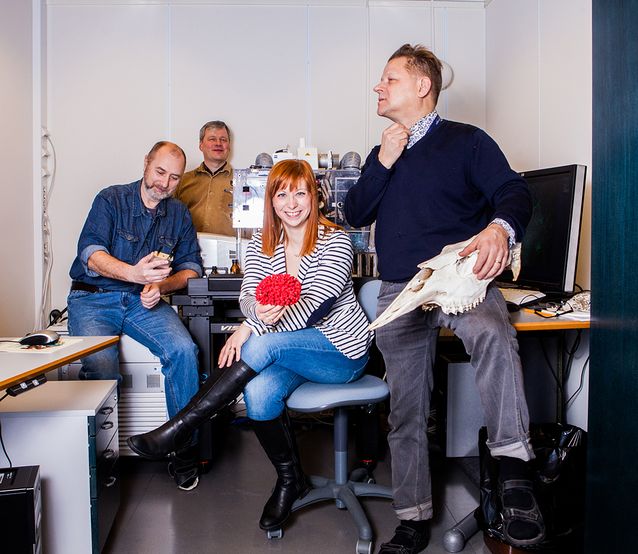Millions of people in the world are waiting for kidney transplants but there aren’t enough organ donors. FutuRena wants to 3D print a functioning mini-kidney in order to save countless lives, says team leader Susanna Kaisto.
“Today we can build cars, mobile phones and even houses with 3D maps. In medicine, we already know how to produce cells, fix genes and image anatomic structures with these three-dimensional maps. Now, our team wants to put together and print a working mini-kidney.
There are millions of people in the world waiting for a kidney or other organ transplant but there’s a huge shortage of organ donors. Every day, people die because there aren’t enough spare parts for them. The final aim of our research is to build actual size replacement kidneys for people in need. It’s a long-term process, so first we want to create a miniature version with all the parts that a real kidney has.
While pursuing this goal, we get valuable information on the development of the replacement kidney. The mini-kidney could be used as a model for diagnostics and to test medical care. This would reduce the need for animal testing and accelerate medicine development. So, even before reaching our final goal we will already have gained huge benefits in kidney research.
There are many big steps and questions to be answered along the way. First, we need information on the composition of the kidney. What kind of cells do we need to build the miniature version? In addition, we need a map on how to put these cells together to form a functioning kidney. We can get a detailed map of the organ with 3D imaging, and to be able to produce a mini-kidney we need a 3D bioprinter set. We’re lucky to have 3D printing professionals in our team in addition to our biomedicine and biopharmacy experts.
The problem we have on our hands is solvable and we can get there by working together. That really motivates us. We have a competitive instinct and we want to introduce our research to a wide audience. Science has evolved immensely and it culminates in all these possibilities we have right now for saving people’s lives.”
1. Why can your team make the world a better and more sustainable place?
“In the future, we can build a replacement organ for a sick child, for example. This organ can enable them to live a happy and healthy life. Instead of dying young, they might live until they’re 85 or more and help many other people during their life.”
2. If you could cooperate with anyone in the world, who would it be?
“It would be great to cooperate with a company, like UPM or Supercell, or a business angel. In the long run, they could enable the work and research results of our team financially.”
3. What’s the best thing that has come out of science and research so far?
“Electricity. It has enabled the development of science and all the technologies we have now. Thanks to the internet and new communication devices, our team can be in touch and work with each other even though we’re spread very wide geographically.”
Read more about FutuRena here.
Team members:
Susanna Kaisto, team leader, PhD student, University of Oulu
Monika Österberg, PhD, associate professor, Aalto University
Marjo Yliperttula, professor, University of Helsinki
Ilya Skovorodkin, postdoctoral researcher, University of Oulu
Aleksandra Rak-Raszewska, postdoctoral researcher, University of Oulu
Tomi Kalpio, co-owner and founder, 3DTECH Print
Vladimir Mironov, head of research, 3D Bioprinting Solutions
Jouni Partanen, professor, Aalto University
Jukka Riekki, professor, University of Oulu
Seppo Vainio, professor, University of Oulu

